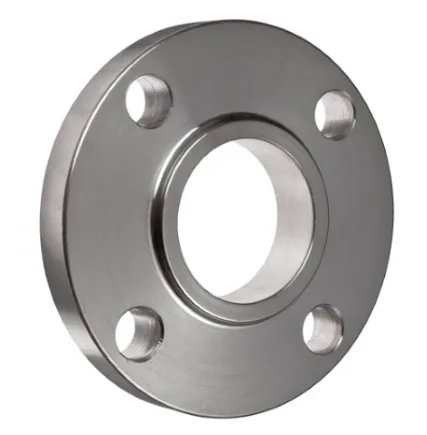-
Cangzhou Yulong Steel Co., Ltd.
-
Phone:
+86 13303177267 -
Email:
admin@ylsteelfittings.com
- English
- Arabic
- Italian
- Spanish
- Portuguese
- German
- kazakh
- Persian
- Greek
- French
- Russian
- Polish
- Thai
- Indonesian
- Vietnamese
- Zulu
- Korean
- Uzbek
- Hindi
- Serbian
- Malay
- Ukrainian
- Gujarati
- Haitian Creole
- hausa
- hawaiian
- Hebrew
- Miao
- Hungarian
- Icelandic
- igbo
- irish
- Japanese
- Javanese
- Kannada
- Khmer
- Rwandese
- Afrikaans
- Albanian
- Amharic
- Armenian
- Azerbaijani
- Basque
- Belarusian
- Bengali
- Bosnian
- Bulgarian
- Catalan
- Cebuano
- China
- China (Taiwan)
- Corsican
- Croatian
- Czech
- Danish
- Esperanto
- Estonian
- Finnish
- Frisian
- Galician
- Georgian
- Kurdish
- Kyrgyz
- Lao
- Latin
- Latvian
- Lithuanian
- Luxembourgish
- Macedonian
- Malgashi
- Malayalam
- Maltese
- Maori
- Marathi
- Mongolian
- Myanmar
- Nepali
- Norwegian
- Norwegian
- Occitan
- Pashto
- Dutch
- Punjabi
- Romanian
- Samoan
- Scottish Gaelic
- Sesotho
- Shona
- Sindhi
- Sinhala
- Slovak
- Slovenian
- Somali
- Sundanese
- Swahili
- Swedish
- Tagalog
- Tajik
- Tamil
- Tatar
- Telugu
- Turkish
- Turkmen
- Urdu
- Uighur
- Welsh
- Bantu
- Yiddish
- Yoruba

Nov . 19, 2024 18:02 Back to list
Creating a Comprehensive Guide for API 5L Specification Compliance and Implementation
Understanding API 5L Specification A Comprehensive Overview
API 5L is a specification set forth by the American Petroleum Institute (API) that governs the requirements for line pipe used in pipeline transportation systems in the oil and gas industry. This specification is critical for ensuring the safe and efficient transportation of hydrocarbons and other fluids, and it outlines the standards for the manufacture of welded and seamless steel pipes. API 5L is widely recognized and utilized globally, laying the foundation for uniformity in product quality and performance.
Historical Context
The API 5L specification was first introduced in 1968 and has evolved through several editions to address changing industry needs and technological advancements. API 5L is often utilized in conjunction with other codes and standards, such as ASME and ASTM, emphasizing the collaborative approach within the industry to ensure safety and integrity in pipeline construction.
Key Requirements
The API 5L specification categorizes line pipes based on their intended use and performance characteristics. The pipes are classified into two main grades Line Pipe (PSL1 and PSL2) and Special Grades. The designation of PSL (Product Specification Level) indicates different minimum yield strength properties and chemical compositions.
1. PSL1 This level covers the basic requirements, including the mechanical properties of the steel and ensures that the product meets general industry standards. 2. PSL2 This level includes stricter testing criteria and additional requirements for weldability, chemical composition, and mechanical properties, making PSL2 pipes suitable for more demanding applications.
Aside from the grades, API 5L also covers aspects such as manufacturing processes, quality control measures, and marking requirements. The material properties specified in API 5L, including yield strength, tensile strength, and elongation, ensure that the pipes can withstand various environmental and operational stresses.
api 5l spec

Manufacturing Processes
API 5L pipes can be produced using various methods, including seamless and welded processes. Seamless pipes are manufactured from a solid round steel billet, which is heated and punched to create a hollow tube. This method results in a strong and reliable product. Conversely, welded pipes are formed by rolling plates of steel and welding them along the longitudinal seam. While welded pipes are generally more cost-effective, the quality of the weld must meet stringent standards as specified in API 5L.
Quality Assurance
Quality assurance is paramount in the production of API 5L pipes. Manufacturers are required to perform various tests, including tensile tests, impact tests, and non-destructive testing (NDT), to ensure the integrity of the product. These measures help to identify any potential defects and ensure that the pipes will perform as expected under operational conditions.
Applications
API 5L pipes are utilized in a wide range of applications, primarily in the transportation of oil, natural gas, and other fluids. They are commonly found in pipelines, storage facilities, and offshore platforms. These pipes also play a critical role in the construction of infrastructure projects, ensuring the reliable delivery of essential resources.
Conclusion
API 5L serves as a fundamental guideline in the production and use of line pipes across the globe. Its rigorous standards ensure that pipelines are not only safe and reliable but also efficient in transporting critical resources. As the energy sector continues to evolve, API 5L will likely adapt further to meet new challenges and technologies, ensuring that the industry remains resilient and capable of supporting the world’s energy needs. Understanding the API 5L specification is essential for manufacturers, engineers, and industry professionals involved in pipeline construction and maintenance, as it fosters a culture of safety, quality, and reliability in the ever-demanding energy sector.
Latest news
-
ANSI 150P SS304 SO FLANGE
NewsFeb.14,2025
-
ASTM A333GR6 STEEL PIPE
NewsJan.20,2025
-
ANSI B16.5 WELDING NECK FLANGE
NewsJan.15,2026
-
ANSI B16.5 SLIP-ON FLANGE
NewsApr.19,2024
-
SABS 1123 FLANGE
NewsJan.15,2025
-
DIN86044 PLATE FLANGE
NewsApr.19,2024
-
DIN2527 BLIND FLANGE
NewsApr.12,2024
-
JIS B2311 Butt-Welding Fittings LR/SR 45°/90° /180°Seamless/Weld
NewsApr.23,2024











